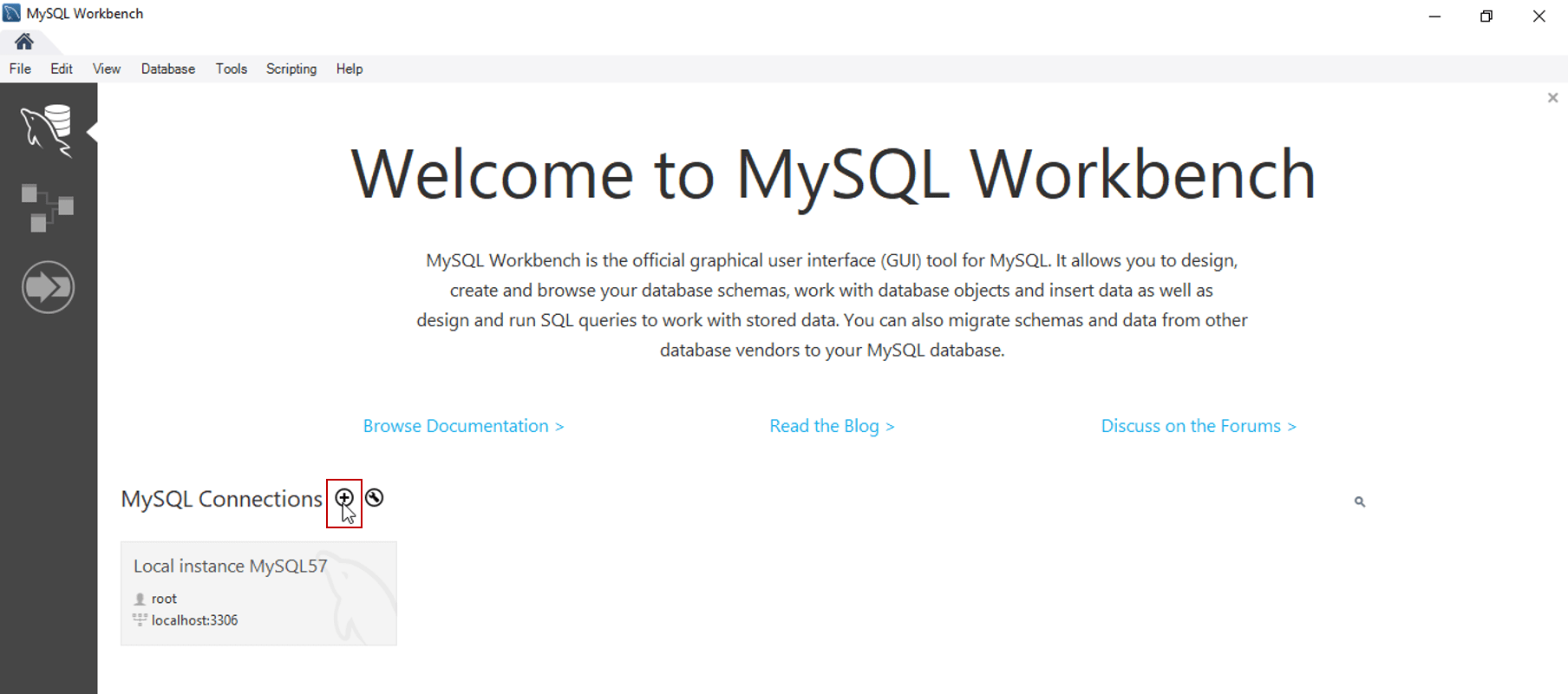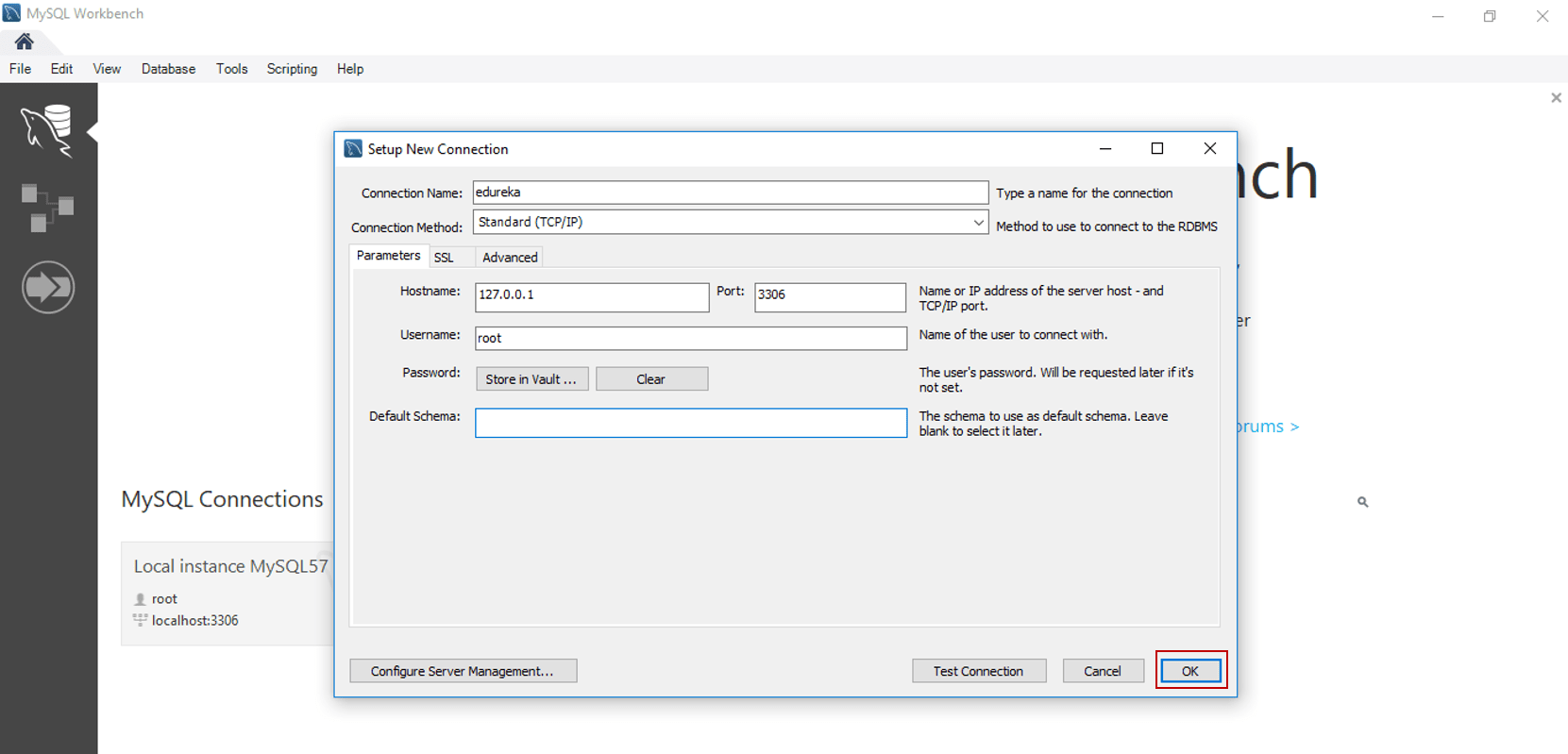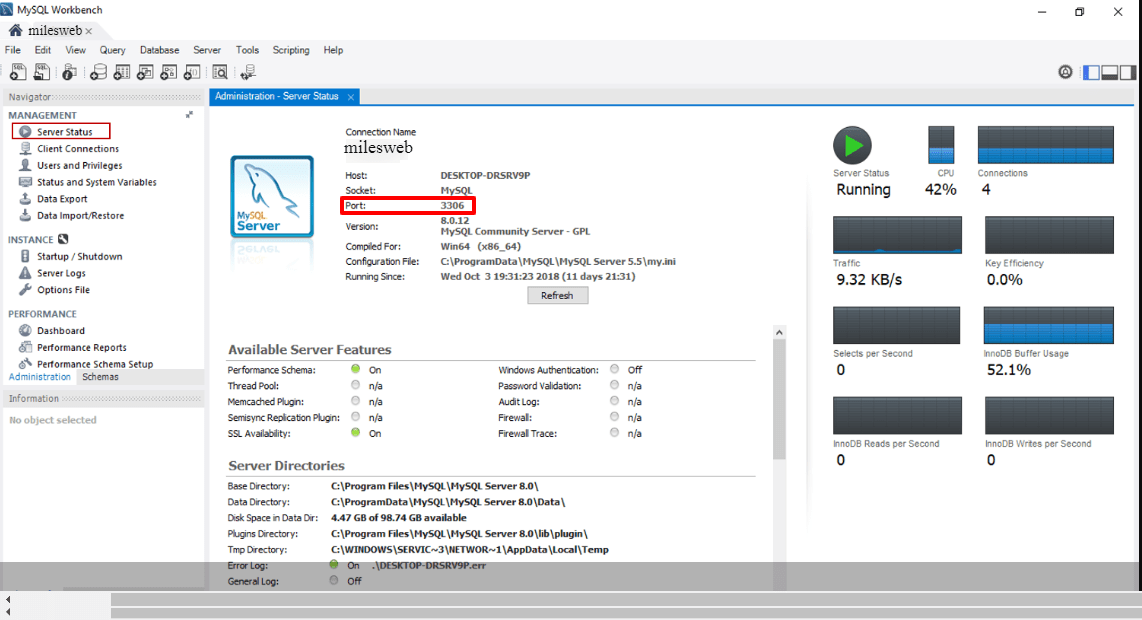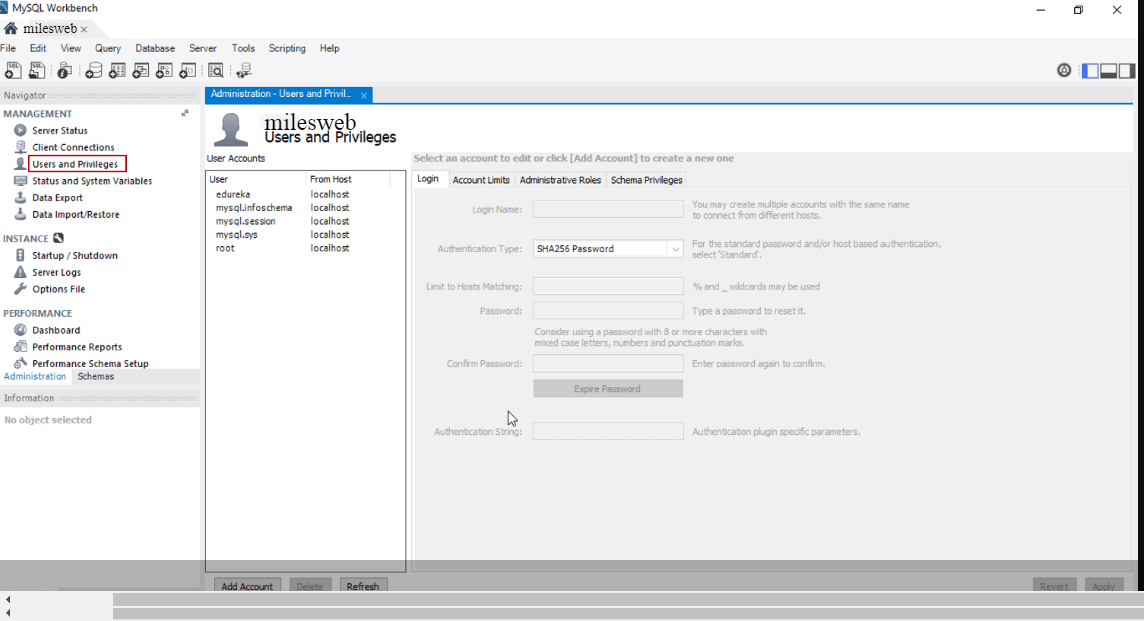This article explains how to use MySQL client applications to access and manage your MySQL database.
#MySQL Client Applications
MySQL provides GUI(graphical user interface) client applications that can be used for the database management purpose.
* MySQL Workbench
It is the integrated tools environment that enables you to manage database, run queries, and more. It replaces the no longer actively developed tools like MySQL GUI tools application bundle.
MySQL Workbench has different versions for Microsoft Windows, Mac OS X, Linux and other operating systems. It is free to download and to use.
What is MySQL Workbench?
MySQL Workbench allows you to quickly connect to your MySQL databases and to this perform following steps :
1. Start MySQL Workbench.
2. On the workspace page, click on + icon situated next to MySQL Connections. The Setup New Connection dialog box will appear.

3. In the text box for Connection Name, type the name for the connection.
4. In the list box for Connection Method, select Standard (TCP/IP).
5. On the Parameters tab, in the text box for Hostname, type example.com, where example.com represents your domain name. You can use your MySQL server IP address in hostname if you are using a different database server other than the web server.
6. Confirm that your Port text box is set to 3306.
7. In the text box for Username, enter one of the following usernames :
• Your MilesWeb hosting (cPanel) account username: Using this username you can access to all of the MySQL databases on your hosting account.
• A MySQL database username created in cPanel: Using this username you can access all of the MySQL databases for which the specified user has been granted privileges.
You can even use MySQL username and password if you want to access any specific database to which the privileges are assigned.
8. In the text box for Default Schema, type the name of the MySQL database that you want to access. This is the optional method, you can leave this text box blank to select the database later.
9. Click on the Test Connection, and then in the text box for Password, type the password for the username you specified in step 7.
Select Save password in a keychain checkbox, so that MySQL Workbench will remember your password.
10. Click on OK.
In case you receive a connection warning about incompatible or nonstandard server versions, click on Continue Anyway.
11. If the connection is successful, you will receive a Successfully made the MySQL connection message. If you do not receive this message, check the values you have specified in steps number 4 to 9, and then try again.
12. Click on OK. MySQL Workbench will save the new connection on the workspace page.
13. To open the connection, click it on the workspace page. You can now create tables, run queries and perform other more activities too.
Also Read :
1)Learn To Repair And Optimize MySQL Database using phpMyAdmin











